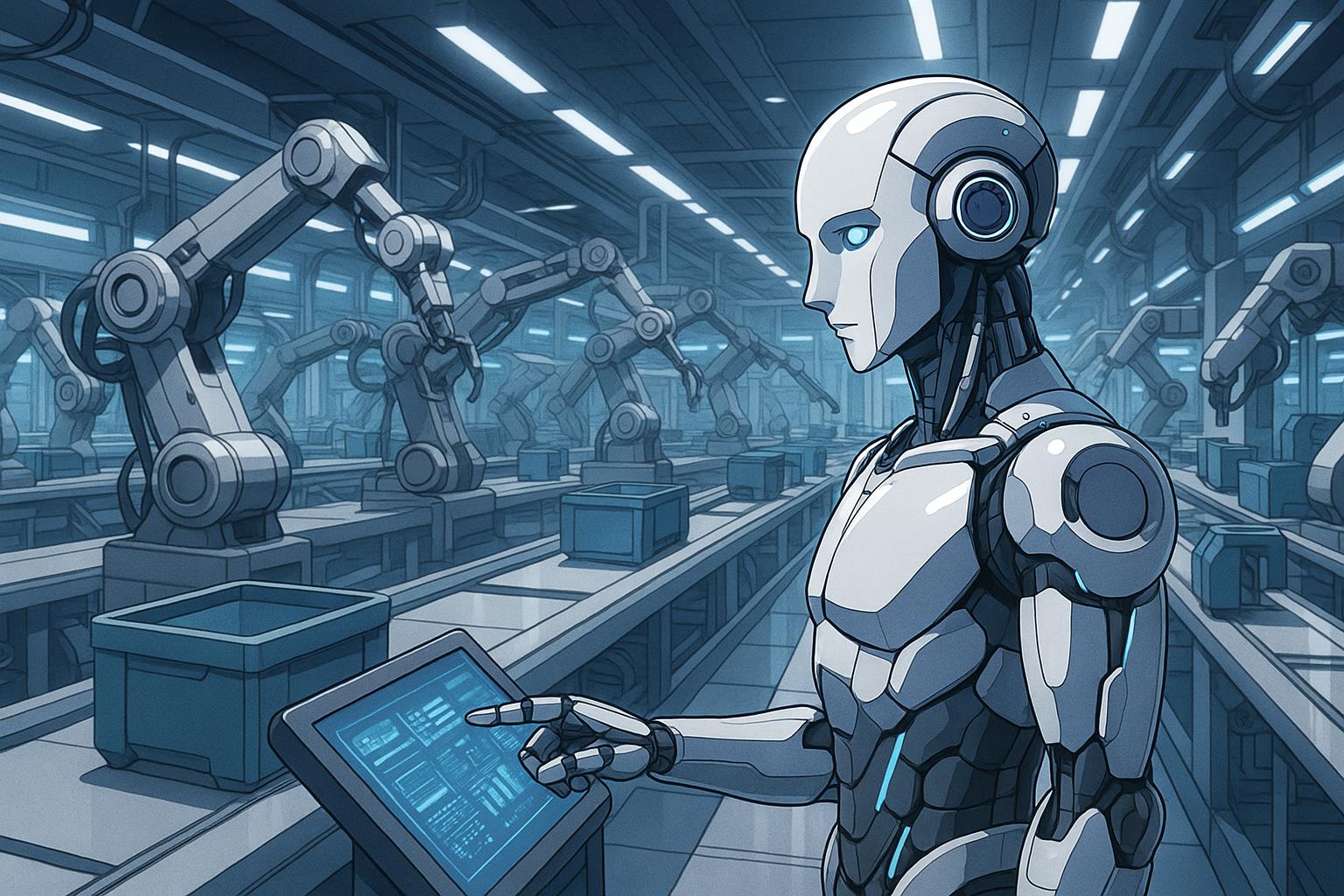The industrial landscape is on the cusp of a transformative era, often referred to as the cognitive industrial revolution. This paradigm shift is primarily driven by the integration of advanced technologies such as artificial intelligence (AI), robotics, and the Internet of Things (IoT) into manufacturing processes. The goal is not merely to automate operations but to optimise and integrate intelligence across all stages of production. Such advancements are reshaping not only the manufacturing sector but also the workforce dynamics and economic frameworks surrounding these industries.
At the forefront of this revolution is the evolution of robotics, which have significantly departed from their early, simplistic roles. Modern robots are now equipped with AI, enabling them to execute tasks with remarkable agility and autonomy. This shift is exemplified by the increasing use of humanoid robots in various settings, including factories and warehouses. For instance, companies like BMW are making strides by incorporating humanoid robots that can walk and perform assembly tasks, aimed at alleviating rising labour costs and addressing workforce shortages. Such initiatives underscore a broader trend: robots are no longer one-trick ponies but versatile tools capable of assisting humans in complex environments.
In a notable development, "dark factories" are emerging, where manufacturing processes operate without any human intervention. These fully automated facilities leverage physical AI and smart machinery, resulting in substantial cost savings by eliminating salaries and physical infrastructure costs typically associated with human workers. This radical shift highlights the potential of cognitive manufacturing to operate continuously and without the human factors that often complicate traditional manufacturing environments. However, the implications of such technology raise ethical concerns regarding job displacement and the need for a ready workforce equipped to handle these changes.
Notably, the global competition in robotics and AI is intensifying. In China, the government is heavily investing in advanced manufacturing technologies in response to its ageing population and labour shortages. This has led to the rapid expansion of automation technologies, with companies such as Zongwei producing sophisticated machinery to meet these challenges. However, this wave of automation has simultaneously displaced many lower-skilled workers, who often migrate to less stable, lower-paying service jobs. There are ongoing efforts to address the skills gap through training initiatives aimed at preparing the workforce for a future dominated by technology.
In the United States, similar sentiments resonate as robotics firms advocate for a national strategy to bolster their industry. With a concerted push from companies like Tesla and Boston Dynamics, American firms stress the urgency of maintaining a competitive edge against China, which has made significant headway in robotics through substantial investments and a focus on innovative applications. Lawmakers are beginning to recognise that without a unified approach to develop and promote robotics, the U.S. risks falling behind in this vital industrial sector.
The trend towards automation is not simply a matter of technology but is also marked by the societal shifts it precipitates. Companies are beginning to deploy humanoid robots like "Digit" from Agility Robotics to fill the void left by a scarcity of available labour, particularly in manufacturing and logistics—a sector increasingly struggling to meet demand amid demographic changes. As these humanoid robots become more commonplace in workplaces, they may very well change the nature of human-robot relationships, prompting considerations around workplace safety, ethical use of surveillance, and the essence of human labour itself.
Planning for this future entails thoughtful engagement with the potential ramifications of cognitive manufacturing. As robots become more integrated into everyday life, leaders and policymakers must consider how to support a workforce that can co-exist with such technology. The advancements in robotics promise efficiency and productivity; however, they also demand a proactive approach to mitigate the socioeconomic ramifications of widespread automation.
Ultimately, the cognitive industrial revolution is a multifaceted phenomenon that will reshape industries while presenting both opportunities and challenges. As leaders prepare for this imminent transformation, they must balance innovation with a commitment to ethical practices that ensure technology serves humanity rather than displacing it entirely.
📌 Reference Map:
- Paragraph 1 – [1], [4]
- Paragraph 2 – [1], [5], [6]
- Paragraph 3 – [2], [3]
- Paragraph 4 – [2], [4]
- Paragraph 5 – [3], [6]
- Paragraph 6 – [1], [2]
- Paragraph 7 – [1], [2], [3]
Source: Noah Wire Services
